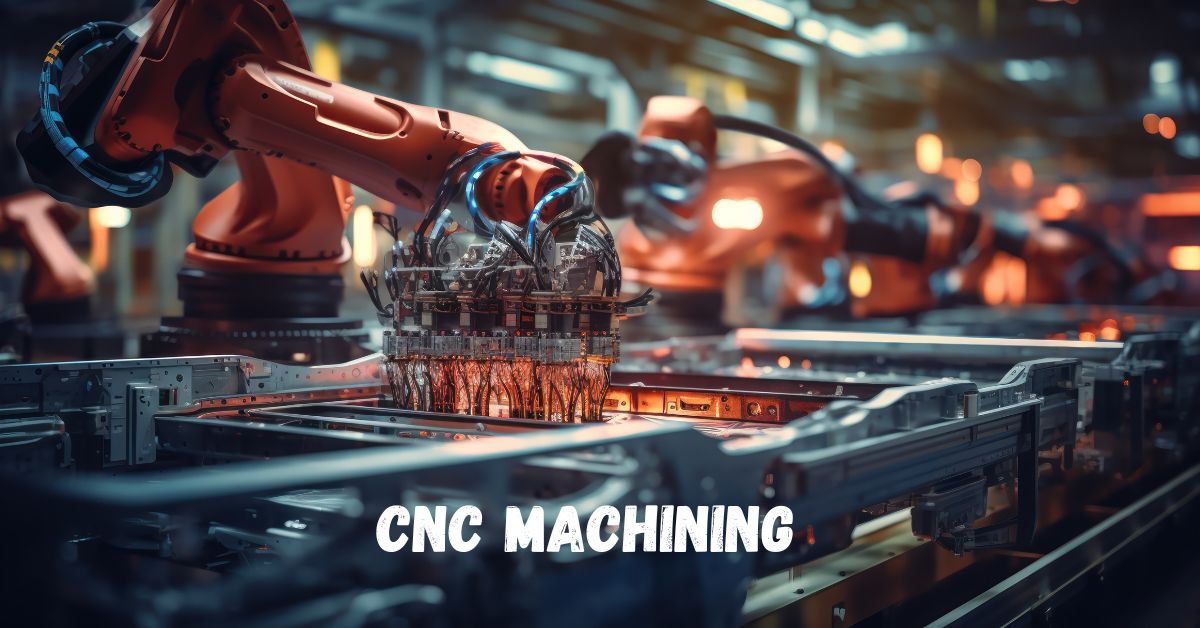CNC, or Computerized Numerical Control, has transformed the landscape of manufacturing by allowing machines to operate with remarkable precision and efficiency. This technology automates the control of machine tools and devices through computer systems, reducing the need for direct human intervention. By replacing manual control with computerized systems, it enhances the accuracy and repeatability of manufacturing processes, making it indispensable in various industries today.
A Brief History
The roots of it machines were developed. These early machines utilized punch cards to direct their movements, setting the stage for a new era in manufacturing. However, it was not until the introduction of computers as controllers in the 1960s that NC evolved into CNC. This advancement enabled manufacturers to program complex sequences of operations, significantly improving production capabilities and leading to higher precision in machined parts.
Understanding G-Code and Its Importance
Central to the operation of CNC machines is G-code, a specialized programming language that dictates the movements and functions of the machinery. G-code consists of a series of commands that instruct the machine on how to move, how fast to operate, and when to execute specific functions. This programming allows CNC machines to perform tasks such as cutting, drilling, and milling with high accuracy. The ability to produce complex geometries and intricate designs has made it a preferred choice for manufacturers across various sectors.
Versatility in Material Processing
CNC machines can process an extensive range of materials, showcasing their versatility in the manufacturing landscape. Common materials include various metals, such as aluminum and steel, as well as plastics, wood, and composites. This adaptability allows it to be utilized in numerous applications, from creating components for the aerospace and automotive industries to producing intricate parts for electronics. The wide-ranging capability of CNC machines to handle different materials and processes underscores their importance in modern manufacturing.
Types of CNC Machines and Their Applications
There are several types of CNC machines designed for specific applications, each tailored to meet various manufacturing needs. Among the most common types are 3-axis, 4-axis, and 5-axis milling machines, which utilize rotating cutting tools to remove material from workpieces. The designation of axes refers to the directions in which the cutting tool can move, with more axes allowing for greater flexibility in shaping complex designs. Turning machines, or lathes, operate by rotating the workpiece against a stationary cutting tool, ideal for creating cylindrical parts. Other types, such as grinding and sawing machines, provide finishing operations and precise cutting capabilities, while multitasking machines combine multiple machining processes into one, streamlining production.
Also Read: Changer in Grease Trap Monitoring
Advanced Techniques
In addition to these core processes, it encompasses various advanced techniques that enhance its functionality. For instance, Electrical Discharge Machining (EDM) uses electrical discharges to remove material from a workpiece, making it suitable for hard materials and intricate shapes. Other methods, like laser cutting and water-jet cutting, employ high-pressure streams or lasers to achieve precise cuts without generating excessive heat. These advanced techniques highlight the adaptability of, enabling manufacturers to achieve complex designs and high-quality finishes across different materials.
Advantages of CNC Machining
One of the key advantages of is its ability to provide high precision in manufacturing processes. CNC machines can perform the same operation repeatedly with exceptional accuracy, making them ideal for producing intricate and complex parts. Moreover, CNC technology significantly improves efficiency by automating manufacturing processes. This reduction in manual intervention not only minimizes human error but also accelerates production rates, allowing manufacturers to meet the demands of modern markets swiftly.
The Role of Automation
As CNC technology evolves, so does the potential for further automation within the machining process. Automation in it can substantially enhance operational efficiency and product quality. Two main areas with the greatest potential for automation are deburring with robots and marking machines. Deburring, the process of removing sharp edges or burrs from a workpiece, can be labor-intensive if performed manually. Integrating robotic systems to automate this task reduces production time and ensures a uniform finish. Automated marking systems are also used to label parts with serial numbers or other identifiers, improving traceability and ensuring consistency across production runs.
Future Outlook
Looking towards the future, the integration of automation, robotics, and advanced software solutions will continue to drive improvements. As these technologies become more sophisticated, they will enable manufacturers to increase production efficiency while maintaining the precision and quality that It is known for. The ability to produce complex geometries and intricate designs quickly and accurately will solidify It’s role as a cornerstone of innovation in the manufacturing industry.
Conclusion
In conclusion, It has evolved significantly since its inception, transforming the way manufacturers operate. With its capacity for high precision, versatility, and automation potential, CNC technology is set to play a crucial role in shaping the future of manufacturing. Whether working with metals, plastics, or composites, CNC machines provide the accuracy and flexibility needed to meet the challenges of modern production demands.
FAQs
What materials can be processed using CNC machines?
CNC machines can work with a wide range of materials, including metals (like aluminum and steel), plastics, wood, and composites. This versatility makes them suitable for various industries.
What is G-code, and why is it important in CNC machining?
G-code is a programming language that provides instructions to CNC machines, dictating their movements and operations. It is crucial for ensuring precision and accuracy in machining processes.
What are the main types of CNC machines?
Common types of CNC machines include milling machines (3-, 4-, and 5-axis), turning machines (lathes), grinding machines, and multitasking machines. Each type is designed for specific machining operations.
How does improve manufacturing efficiency?
It automates the manufacturing process, allowing for high precision, reduced cycle times, and minimized human error. This leads to increased productivity and consistency across production runs.
What are the advantages of automating CNC machines?
Automating CNC machines can enhance efficiency by reducing manual intervention, improving cycle times, ensuring consistent quality, and allowing for complex tasks like deburring and marking to be completed more quickly and accurately.

